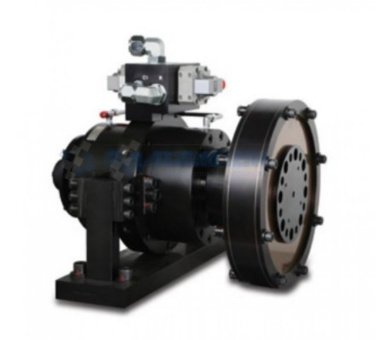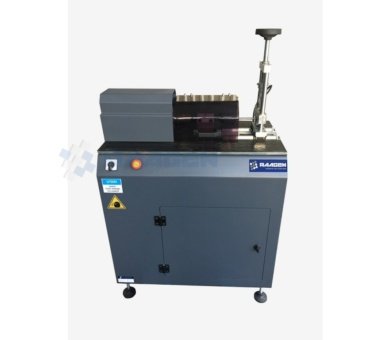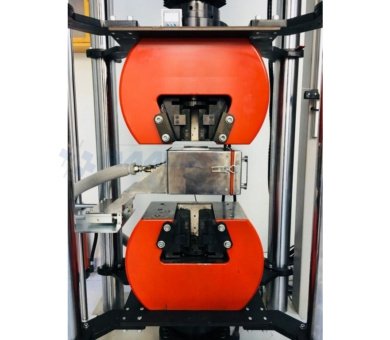Description
High Temperature Test Furnaces
If your existing machine needs high temperature test applications, engineers offers additional high temperature furnaces with their own control systems.
offers:
- Producing High Temperature Furnaces for Universal Test Machines
- Upgrade and repair High Temperature Test Furnaces
- Consultancy and technical support for Elevated Temperature Destructive Tests
- Thermomechanical Fatigue Test (TMF) requirements
- Available of Three Zone Split Furnaces and Three Zone Split Tube Furnaces.
Standard High Temperature Test Furnace Features
• 3-zone furnace; standard from RT°C to 1600 °C (higher temperatures are optional, please define detailed)
• Openings for load train, Thermocouples and Extensometers
• 3 Thermocouples for furnace controller (changeable regarding test applications)
• Precise temperature distribution by 3-zone-temperature- controller
• Light, thermal insulation material
• Made of stainless steel
• Integrated, sophisticated control algorithm for precise temperature along the specimen and for protection from overshoot of temperatures.
Standards
ASTM E606 Standard Test Method for Strain-Controlled Fatigue Testing,
BSI 7270 Metallic materials Constant Amplitude Strain Controlled Axial Fatigue Test,
JIS Z2279 Method of High Temperature Low Cycle Fatigue Testing Tor Metallic Materials,
AFNOR A03-403 Produits Metallıques – Pratique Des Essais De Fatique Oligocyclique ,
ISO 12106 Metallic Materials Fatigue Testing — Axial strain controlled method,
ISO 6892-2 Metallic materials – Tensile testing – Part 2: Method of test at elevated temperature,
ASTM E139 Standard Test Methods for Conducting Creep, Creep-Rupture, and Stress-Rupture Tests of Metallic Materials,
ASTM D2990 Standard Test Methods for Tensile, Compressive, and Flexural Creep and Creep-Rupture of Plastics,
ASTM C1291 Standard Test Method for Elevated Temperature Tensile Creep Strain, Creep Strain Rate, and Creep Time to Failure for Monolithic Advanced Ceramics,
ASTM C1337 Standard Test Method for Creep and Creep Rupture of Continuous Fiber-Reinforced Advanced Ceramics Under Tensile Loading at Elevated Temperatures,
ASTM C1359 Standard Test Method for Monotonic Tensile Strength Testing of Continuous Fiber-Reinforced Advanced Ceramics With Solid Rectangular Cross Section Test Specimens at Elevated Temperatures,
ASTM C1366 Standard Test Method for Tensile Strength of Monolithic Advanced Ceramics at Elevated Temperatures,
ISO 22215 Fine ceramics (advanced ceramics, advanced technical ceramics) — Test method for tensile creep of monolithic ceramics,
ASTM F2789 Standard Guide for Mechanical and Functional Characterization of Nucleus Devices,
ASTM E2760 Creep-Fatigue Crack Growth Testing Standard for a Range of Steels,
ASTM E2714 Creep Fatigue High Temperature Test,
ASTM C480 Flexure Creep Sandwich Constructions Test,
ISO 20392 Compressive Creep for Thermal-Insulating Materials,
ISO 7616 Rigid Cellular Plastic Compressive Creep,
ASTM C1181 Compressive Creep Polymer Grout Test,
ISO 7850 Cellular plastics, rigid – Determination of compressive creep,
ASTM C1291 Tensile High Temperature Ceramics Test






Reviews
There are no reviews yet.